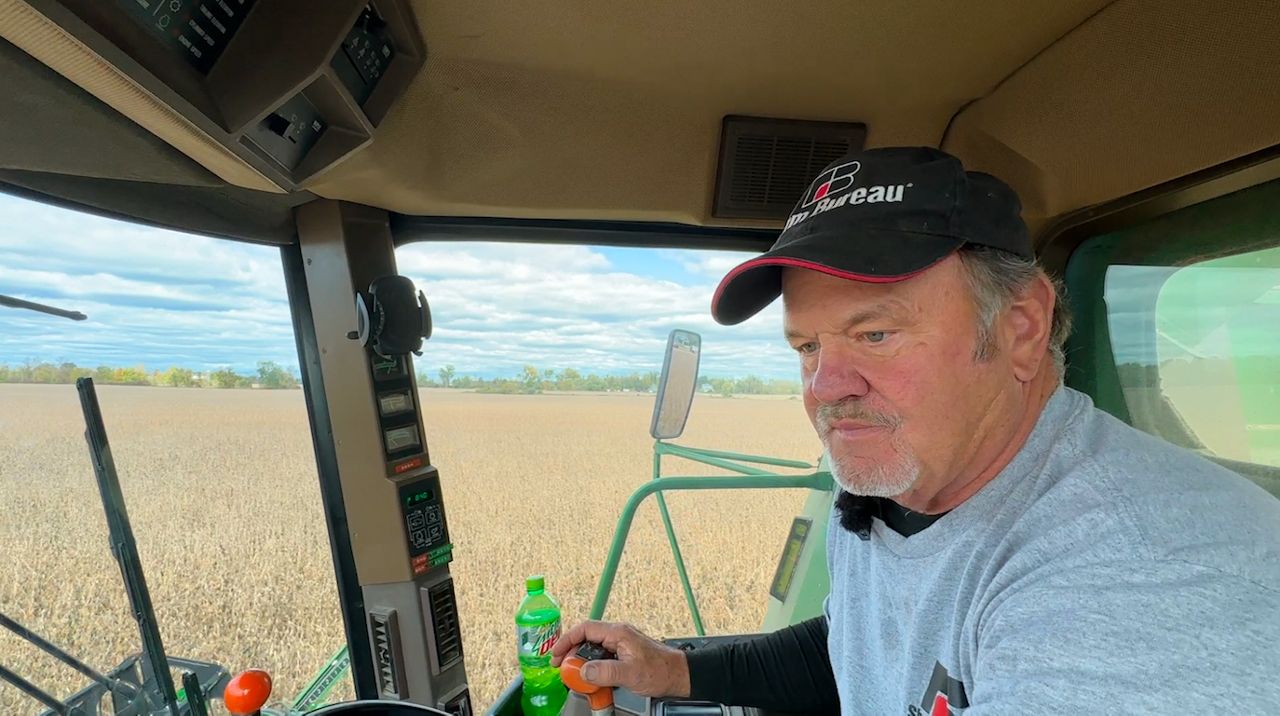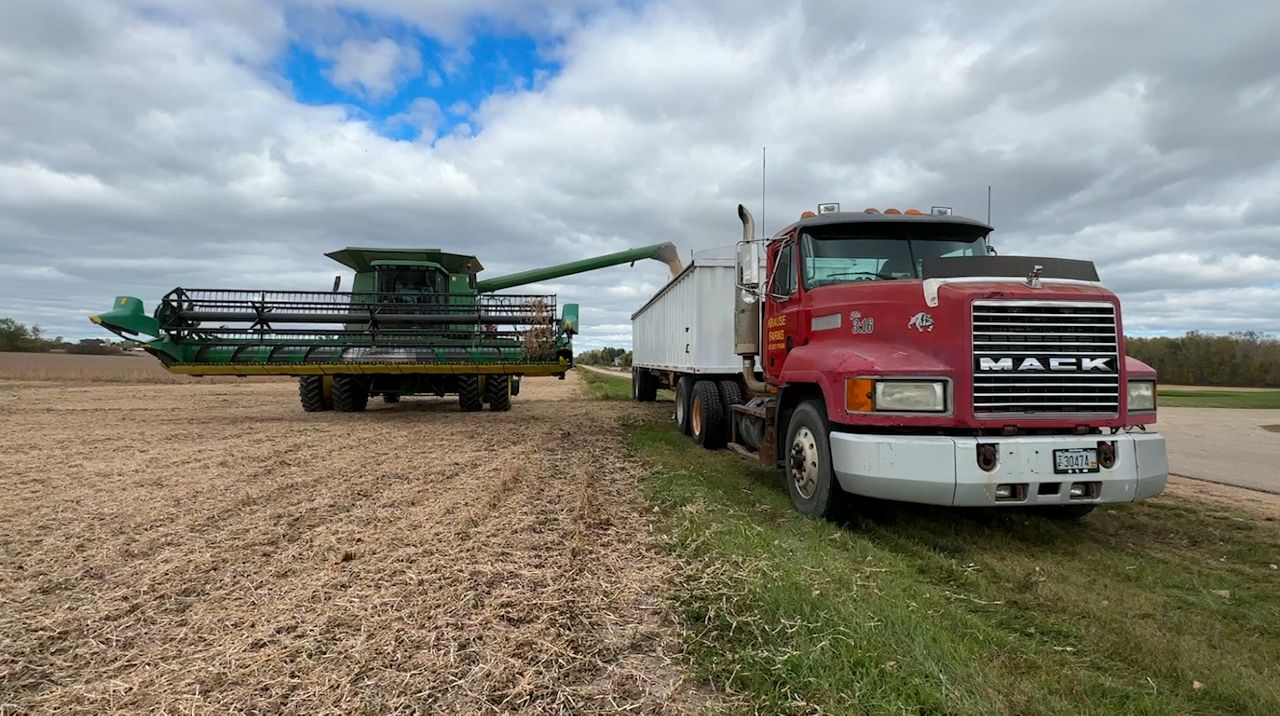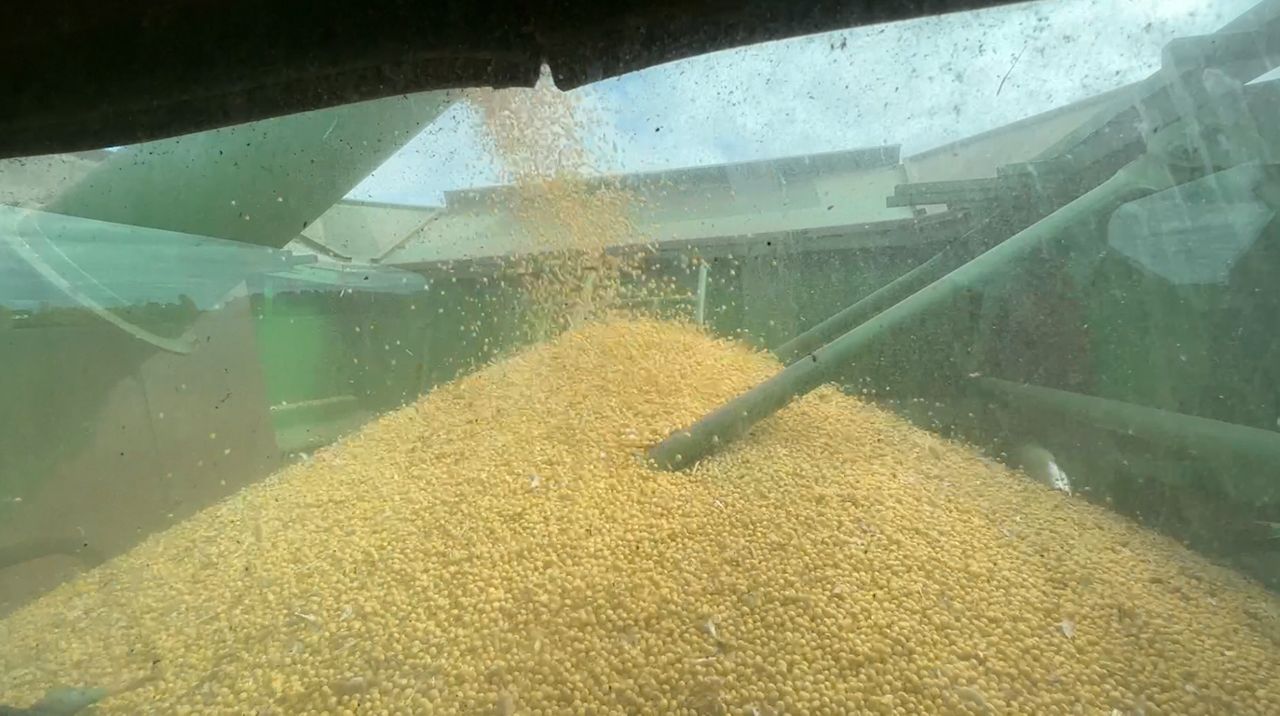KRAKOW, Wis. — One pass at a time Bob Krause is harvesting soybeans from a farm field in rural Shawano County near Krakow.
This time of year, there are a few places he’d rather be than in the cab of his John Deere combine.
“It feels great when things are going well and the yield is above average. It makes you feel good,” Krause said. “You sleep good at night knowing that you hauled a few loads in and you can start paying some bills. It’s always an exciting time.”
Krause other farmers around Wisconsin faced a drought through most of the state. Despite that dry weather, he’s happy with the yields on his soybeans.
“This is one of those summers where you could stand at the house and literally watch the rain bypass you. A matter of a mile can be the difference of a couple of inches of rain this year,” he said. “It’s really been spotty. One guy can have really good yields and it looks pretty good and you can get five miles away and things have dried right up.”

Wisconsin farmers saw drought conditions that ranged from abnormally dry to exceptional drought throughout the growing season.
State figures indicate about about half the corn and soybean crop are rated in fair condition or worse.
Chris Clark, northeast region crops and soils outreach specialist for University Of Wisconsin Extension, said many farmers in this part of the state got timely rains.
“When I say timely for corn, we needed that in July and we did get some rain,” Clark said. “There were still some producers in our area that did miss it, but a majority of our area did get some … For soybeans, later in August we got some good rains and the soybean was able to fill the pods a little bit more.”

But other parts of the state — including Central and Southwestern areas — weren’t as fortunate.
“They’re having conversations with their highway departments about how they can prepare to potentially harvest alongside the roadsides for emergency forage in the next coming crop year,” Clark said.

Krause said before he starts thinking about what next year may bring, he’ll stay focused on this crop.
“That’s one thing about being my age, you’ve been through a lot of droughts, you’ve been through wet years, cold years,” he said. “The one thing I have noticed is we can grow a pretty good crop with less rain they we could even in 2012 when we had a bad drought.”



